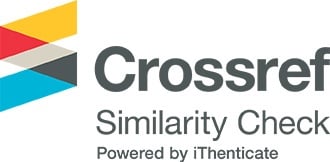Sử dụng nội dung do sinh viên tạo trong giảng dạy truyền thông
Các tác giả
DOI: https://doi.org/10.59294/HIUJS.30.2024.649Từ khóa:
nội dung sinh viên tạo, dạy học tương tác, học tập trải nghiệm, ngành truyền thôngTóm tắt
Trong bối cảnh hiện nay, sinh viên đa phần là công chúng thường xuyên của các hoạt động truyền thông hướng đối tượng, thông điệp được tạo ra và truyền tải dựa trên nhu cầu khán giả, khán giả thích tương tác và chia sẻ. Sinh viên đến lớp cũng mong muốn là khán giả hoạt động truyền thông giảng dạy theo cách tương tự. Với góc tiếp cận truyền thông và giáo dục, bài viết nhằm quan sát quá trình giảng viên ngành truyền thông khai thác nội dung do sinh viên tạo như một phần của phương pháp giảng dạy trải nghiệm và xây dựng tri thức xã hội. Từ đó, tác giả đưa ra dự báo về xu hướng gia tăng nội dung do sinh viên tạo, đề xuất các bước khai thác hiệu quả dạng nội dung này trong giờ học ngành truyền thông.
Abstract
In the current context, most students are audiences of audience-centered communication that messages are created and transmitted based on the audience's needs, and audiences tend to engage in interactive behaviors and disseminate content to others. Students would like to be audiences in educational communications in a similar way. With the approaches of communication studies and education studies, the article aims to observe the process of Communication Studies lecturers utilizing student-generated content as a part of interactive teaching methods and experiential learning. Therefore, the article provides a forecast of increasing student-generated content and proposes procedures to effectively exploit this kind of content in Communication Studies lesson plans.
Tài liệu tham khảo
[1] Alessandro Delfanti& Adam Arvidsson, Introduction to Digital Media, H.: Wiley, 2018 .
DOI: https://doi.org/10.1002/9781119276296[2] Kevin Crowston, Isabelle Fagnot, Stages of Motivation for Contributing User-Generated Content: A Theory and Empirical Test, https://doi.org/10.1016/j.ijhcs.2017.08.005, 2018 (truy cập ngày 20/7/2024).
DOI: https://doi.org/10.1016/j.ijhcs.2017.08.005[3] British Council, Báo cáo nghiên cứu thế hệ trẻ Việt Nam, https://www.britishcouncil.vn/sites/default/files/nghien-cuu-the-he-tre-viet nam.pdf, 2020 (truy cập ngày 20/3/2024).
[4] Madona Giorgdze, Marine Dgebuadze, Interactive teaching methods: Challenges and perspectives, http://ijaedu.ocerintjournals.org/en/download/article-file/390165, 2017, (truy cập ngày 20/7/2024).
[5] Dr. BADA, Steve Olusegun, Constructivism Learning Theory: A Paradigm for Teaching and Learning, IOSR Journal of Research & Method in Education (IOSR-JRME) e-ISSN: 2320–7388, p-ISSN: 2320–737X Volume 5, Issue 6 Ver. I (Nov. - Dec. 2015), PP 66-70 www.iosrjournals.org, 2015 (truy cập ngày 20/7/2024).
[6] Amna Saleem, Huma Kausar, Farah Deeba, Social Constructivism: A New Paradigm in Teaching and Learning Environment, DOI:10.52700/pjh.v2i2.86, 2021 (truy cập ngày 20/7/2024).
DOI: https://doi.org/10.52700/pjh.v2i2.86[7] Phan Trọng Ngọ, Lê Minh Nguyệt, “Kinh nghiệm và học trải nghiệm trong dạy học”, 13/8/2017, http://vjes.vnies.edu.vn/sites/default/files/146_2017-8-13.pdf, (truy cập ngày 20/3/2024).
[8] Lara Gittings, Ross Taplin, Rosemary Kerr Experiential learning activities in university accounting education: A systematic literature review, https://doi.org/10.1016/j.jaccedu.2020.100680, 2020 (truy cập ngày 20/7/2024).
DOI: https://doi.org/10.1016/j.jaccedu.2020.100680[9] Mark Colwell, “The user generated content creator's handbook: How to Turn Your Passion for UGC content into a Successful Career”, H.: KDP, 2022.
Tải xuống
Tải xuống: 208











